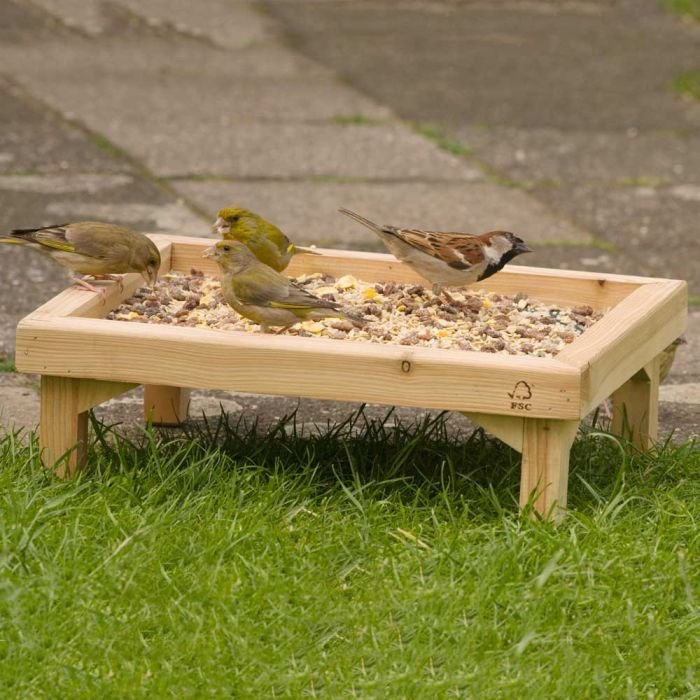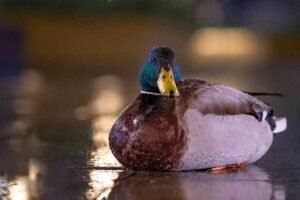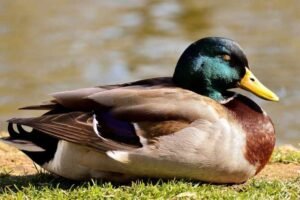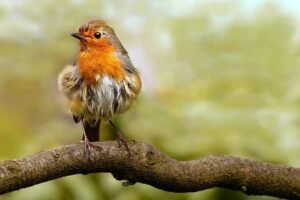So what are Ground feeders? Ground feeders are devices that are used to feed a variety of animals outdoors. These devices are typically in the shape of a platform or tray and are usually situated either directly on the ground or raised slightly above it. Used frequently for birds and birdwatching, ground feeders are also used to attract small animals.
These feeders typically consist of a small raised platform (on short supporting legs), a tray full of animal feed or birdseed, short containing walls that surround the tray, and a wire mesh or solid bottom to the tray. The tray bottom (or the tray itself) often can be removed to be washed, or for replacing the food supply.
If you are into birdwatching, want to feed animals outside of your home, or are just looking for a new outdoor hobby, you might want to consider getting a ground feeder. These small. platform-like devices are a convenient way to enjoy birds and animals without interfering too much with the nature around them. But what are ground feeders and what are the best ways to put them to use? This article will explain what they are, as well as explore common ground feeder types, foods, birds, and animals that use them.
Advantages Of Ground Feeders

The advantage of using a ground feeder is that they offer animals easy access to food, given their open design and their position low to the ground. They also allow the seed or food to remain off of the ground and can prevent the food from spoiling or rotting.
Furthermore, ground feeders can be cleaned easily because of their design. They are not hard to reach, and the food within them can be replaced easily. If there are seed husks or shells present, these can be removed and disposed of with relatively little effort.
Types of Ground Feeders
Ground feeders can be divided into types based on their component materials, design, and their intended uses. Roughly speaking, their component materials can be divided into a few categories:
- Metal/Wire Mesh – a type that has a wired mesh bottom or sides. May have legs similarly made of metal or wood.
- Wood – a type comprised primarily out of wood. Can have raised wooden sides, a solid wooden or a wired mesh bottom.
- Plastic/Composite – typical have raised plastic sides and legs. Its tray can have a solid plastic or wired mesh bottom.
Design-wise, ground feeders may take on several forms. Here are a few of them:
- Fixed tray – a type whose tray is solidly attached to its legs and is unable to be removed from them.
- Removable tray – a type whose tray is removable from its leg. This type is suitable for cleaning and food replacement.
- Roofed – a type that has a small roof above the tray or platformed feeding area. Trays in this type may be removable.
It should also be noted that ground feeders can come in a variety of shapes. Though rectangular platforms are the most common, there are other shapes available, such as circular, square, oval, and trough-shaped feeders.
There are different animals for which ground feeders are typically designed. These include:
- Birds – typically smaller birds that like to feed close or near to the ground. This, however, can include waterfowl as well.
- Small animals – namely small mammals that frequent either backyards, parks, or gardens such as hedgehogs.
- Livestock – including larger captive animals, pets, and farm or ranch animals. This type comes in many different designs.
An examination of ground feeders by animal type follows below.
Ground Feeders For Birds
Bird ground feeders are perhaps the most common type of ground feeder. These smallish feeders measure anywhere from a few inches to one or two feet in length and width.

These types of feeders can have fixed or removable trays, and can also feature protective roofs. Their trays can be solid but also meshed in varying degrees, from very fine meshing to just large enough to allow some seed to fall through.
In contrast with other bird feeders — like house bird feeders, tube bird feeders, window bird feeders, peanut bird feeders, and thistle (mesh) bird feeders — ground bird feeders are not suspended from a tree, pole, or house. They are most closely related to tray or platform bird feeders in their construction, and the fact that they have their base on the ground (albeit closer to it or directly on it).
Place out in the open, away from shrubs where predators could ambush birds.
rspb.org.uk
Some bird feeders come with wire boxes or cages that are friendly to smaller birds, which can reach inside, and keep out larger birds and animals (namely squirrels).
Are you wanting to attract birds to your feeder? then here’s how.
Bird Species
There are various species of birds that can benefit from bird ground feeders. These include sparrows, mourning doves, juncos, starlings, towhees, mockingbirds, thrashers, anis, bluebirds, cardinals, pigeons, larks, bluejays, pipits, waterthrushes, flickers, and grackles.
Larger birds attracted to these feeders can include roadrunners, grouses, quail, pheasants, and wild turkeys. Ducks, geese, and other waterfowl can use ground feeders as well.
Foods
Foods for birds can include sesame seeds, sunflower hearts, white millet, milo seed, rice, nyjer, barley, wheat, corn. grass seed, dandelion seed, and sorghum.
Other types of bird food can be suet cakes or crumbles, mealworms, or small bits of fruit. Depending on the species that one wants to attract, there are different foods for all different types of birds.
Cleaning
Since birds may not pick up all foods presented (and since they tend to leave droppings), bird ground feeders are conducive to regular cleaning. With a bird ground feeder, wire meshes and trays can be cleaned every other day (ideally daily). Users tend to use a hose, soap, washcloth, or similar cleaning materials.
Shapes
Bird ground feeders tend to be rectangular in shape, low to the ground and may have a “roof” slightly above the feeding area. They also can be squarish or round, depending on the make. Finally, these feeders usually have raised walls on which small birds can perch and peck away at their presented birdseed or food.
Ground Feeders For Small Animals
Although bird ground feeders are the most common type of ground feeders, small animals can benefit from ground feeders as well.
Animal Species

Ground feeders can be used for different small animal species, especially small mammals. These species can include the hedgehog, squirrel, chipmunk, opossum, raccoons, rabbits, skunks, even larger mammals like porcupines and beavers.
We have written an extensive article on how to attract hedgehogs to my garden, in an attempt to help increase their numbers.
British hedgehogs are now officially classified as vulnerable to extinction
https://www.britishhedgehogs.org.uk/
There are species-specific feeders available (especially for common species like squirrels) which are meant to keep birds and pests (like rats and mice) away from the available food.
Foods
Small animals can eat a variety of foods, but most commonly they eat seeds, nuts, acorns, vegetables, and fruit. There are also species-specific mixes of foods, that are sold in stores.
Shapes
Small animal feeders can actually be smaller than typical bird feeders, and much different in shape. Some of them –especially for squirrels — can be house-like in appearance with liftable or otherwise adjustable doors.
Some of these feeders (especially for squirrels and chipmunks) can take the shape of picnic tables and are placed on the ground with the food (like a corn cob) placed steadily on a center spike.
Conclusion
As ground feeders come in a diverse variety of shapes, materials, designs, and intended uses, there is not a single type of feeder that is categorically exemplary.
There are several characteristics, however, that ground feeders do have in common — and this includes a position closely situated on the ground, space for feeding different animals, and a convenient way to access, clean, and replenish the feeder. With this in mind, a user can pick out the right type of ground feeder for their purposes.





